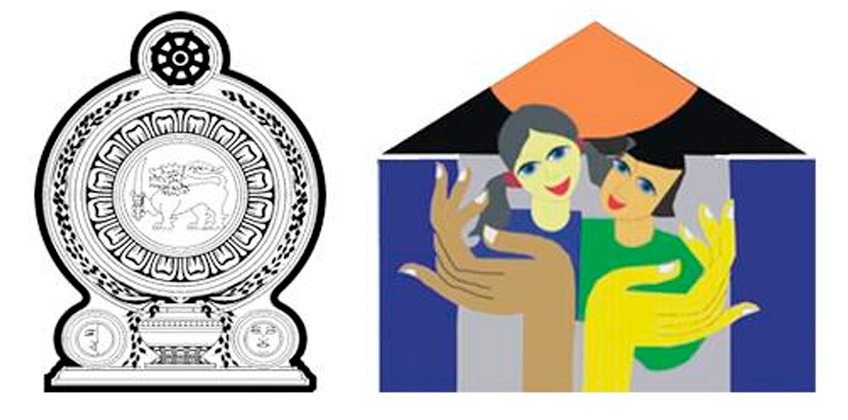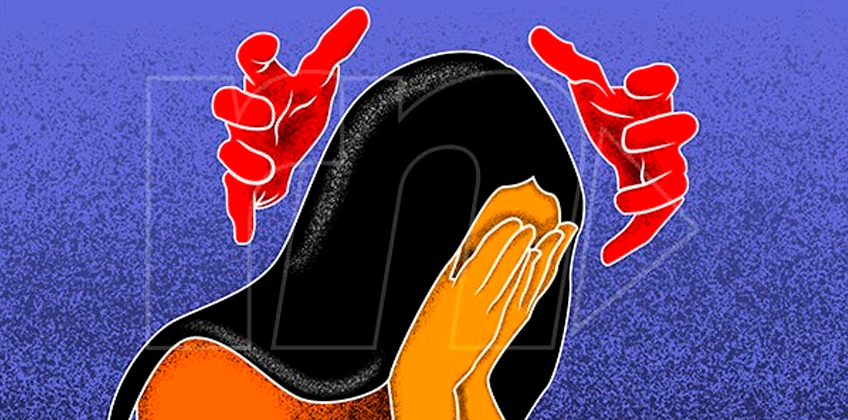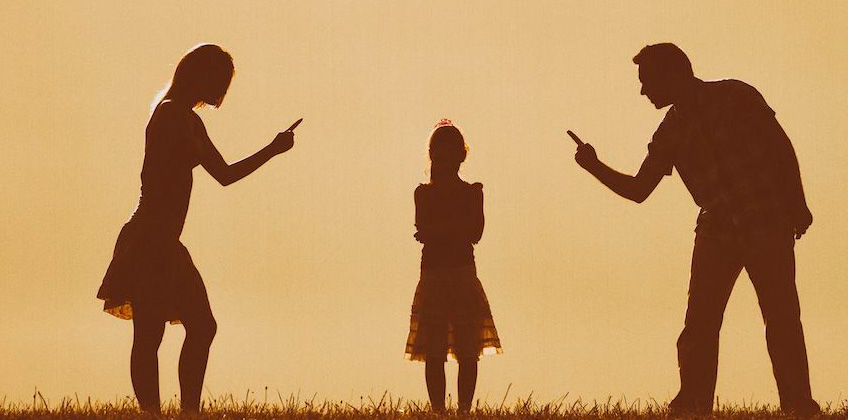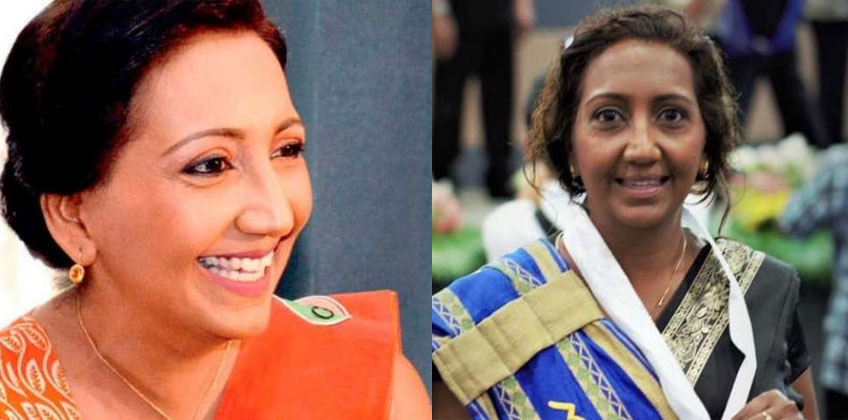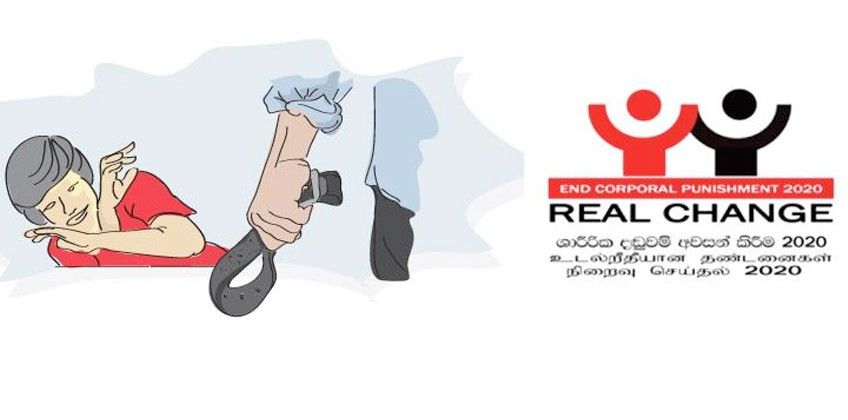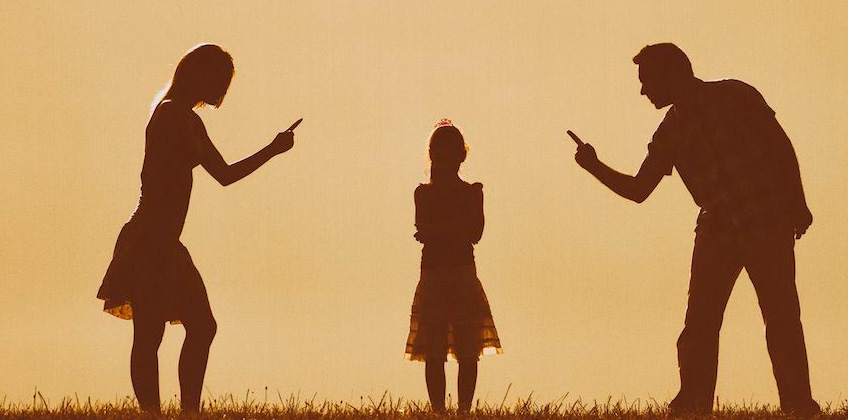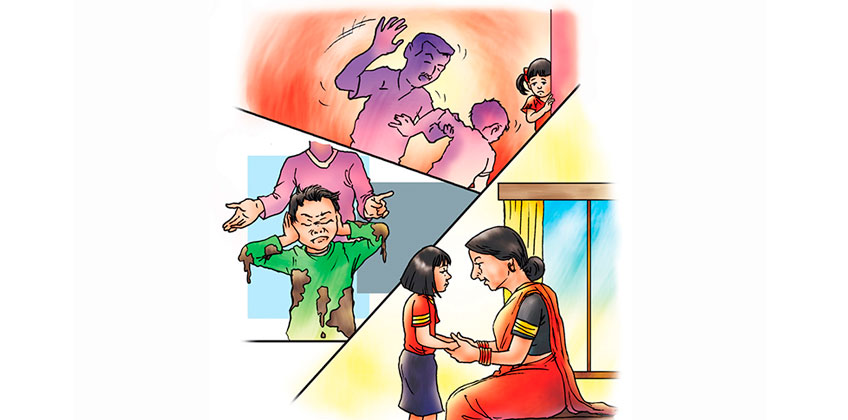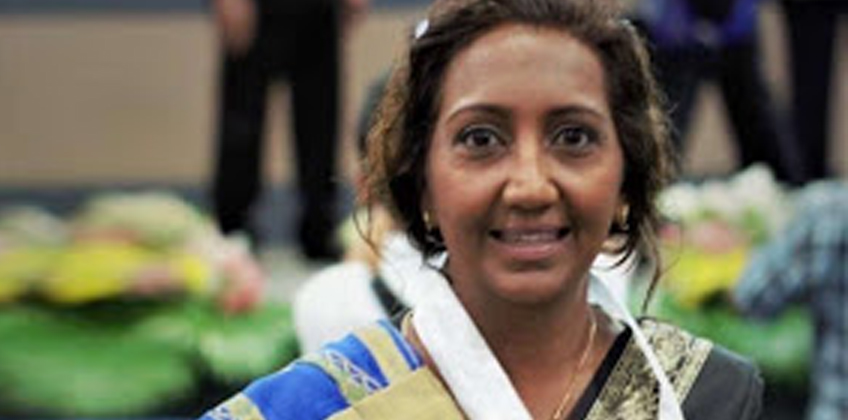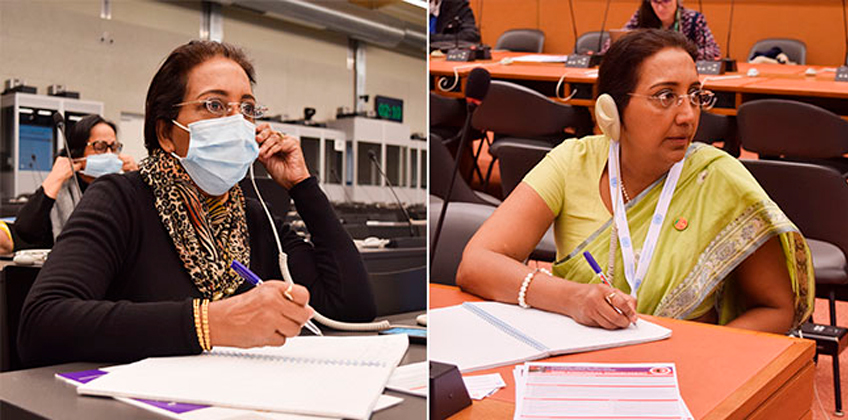
By Shanika Sriyananda
You can hit your spouse or your boss in the office or even a fellow staffer or your neighbour but you will be put behind bars for committing a crime.
But what about hitting your own child or if you are a teacher hitting your students (although legally not permitted) to ‘discipline’ them? Will you be locked up as it is also an offence under the existing laws?
Mostly, it is not as harming a child to ‘correct’ him or her is culturally permitted and justified against children in most of the countries while the laws protect adults from all forms of harm. Can this be justified in this modern era, where people are even lobbying against harming animals while young souls suffer from emotional and physical scars inflicted on them to ‘discipline’ them?
In the book titled ‘This hurts me more than it hurts you’, written by Nadine A. Block, children in the US have shared their thoughts about CP through drawing and writing their own experiences and also suggest what to do instead of harming them. Here is what was written by a 12 year-old boy living in Illinois about spanking:
“I believe that spanking isn’t good because it teaches children nothing. It doesn’t help them, and all it does is hurt them. It is very painful and might actually make them do more bad things to annoy or disappoint you. Kids are very precious and shouldn’t be harmed. No parent or teacher would want to be spanked. Why would you want to spank children?”
Amidst a strong lobby, ‘ECP2020’, a special campaign designed to end CP in Sri Lankan schools, is going on signing an online petition against CP and preparing ‘The Pentagon Proposal’ inviting five key stakeholders responsible for child protection to hand over to President Maithripala Sirisena, the Daily FT spoke to some of the key figures, who have tirelessly worked to ‘re-energise’ present laws and education ministry circulars to save children from cruelty in the name of ‘discipline’ at schools and homes.
Palitha Fernando, the former Attorney General
CP is discouraged on the basis that it affects both the physical and mental growth of the child. I do agree that there should be a limitation on using CP as a corrective method. Inflicting pain on an individual has been condemned as inhuman. However the infliction of bodily pain in any form is illegal and such action by adults would attract penal sanction as the law stands today.
As regards children, this was considered an accepted method of correcting children over the years. Even today there are teachers who believe that punishment should be inflicted to correct the behaviour of children when they are young.
When I was serving in the AG’s Department, we even sent out a circular to the police through the IG not to arrest teachers for inflicting CP where it only amounts to simple hurt and it has been done during school hours.
Our direction was to submit the matter to us so that we could consider whether it was a fit case to arrest and institute criminal proceedings. In my view, the infliction of CP on children could be discouraged simply because, world over it is recognised as affecting the healthy growth of a child.
I have always been against criminal prosecutions of teachers for minor punishment inflicted and in my experience there was a case where a teacher beat a child fracturing an arm and there was another instance where the beating resulted in the rupture of the ear drum. These actions no doubt attract penal sanctions.
However, it should be noted that even a slight injury inflicted due to canning a child attracts penal sanctions as the law stands today. Where such incidents are reported the media highlight them and the teacher concerned is sometimes dragged into court, when the parents of all other students protest. In these circumstances, we considered it necessary to educate the parents and the teachers of the ill-effects of CP. By doing so the deep rooted belief that corporal punishment is necessary as a corrective method can be erased off. Until then it would be necessary to consider each case on its own merits and see if any reconciliation is possible.
That was the thinking behind the circular sent by the AG to police stations which was criticised by the National Child Protection Authority headed by Prof. Harendra de Silva. However, K.C. Kamalasabeyson, the then AG was of the for, belief that such intervention by the AG would serve a useful purpose. In most such cases the parties reconciled and the parents withdrew their complaint not due to any compulsion but as they realised that the child had not been beaten with the intention of hurting the child but as a corrective method.
Educating society on this aspect is required due to the cultural practices deep rooted in our society. It must be emphasised that it is the view of experts that a beaten up child may react violently and also may develop a hatred towards society. That has to be prevented at any cost. Teachers and parents should be educated on child psychology and they should be educated on the corrective methods suggested by experts in the field. The law enforcement authorities should carefully consider the facts to differentiate between an inhuman attack on a child and punishment as corrective method in the interest of the child.
Dr. D.C. Ambalavanar, a visiting lecturer, Department of Surgery of the Faculty of Medicine of the University of Jaffna
Why is CP bad?
When children are exposed to this kind of violence on a daily basis for most of their lives is it surprising that they think that violence is an acceptable way to solve issues? Not only does CP do physical harm but it can seriously scar impressionable minds. There are many alumni of leading schools that I have spoken to who have told me how they want nothing to do with their schools because of their suffering. Can you imagine what goes through the minds of 17 and 18 year olds who are beaten? They will feel humiliated and resentful. There have been one or two instances where students have assaulted teachers outside of school. Self-esteem is affected and children become fearful and will not do well in their studies.
Why are teachers doing this?
- this practice is handed down and seems to them to be the simplest way to effect discipline even though they themselves from experience know that it does not work!
- some teachers have their own problems and take it out on the students. They should be able to see counsellors.
- teachers are inadequately trained in alternative methods and have little understanding of child psychology
- classroom numbers may be large and therefore control more difficult
- and of course some have sadistic/authoritarian tendencies
There are of course many teachers who do not use CP and try to be kind and understanding with their students. Unfortunately they are the silent group in the face of the more CP friendly set of teachers.
What can be done?
The teachers and parents should be first of all made aware of the severe harm that CP does and told clearly that it is unacceptable. When prominent people get up and say how they become successes because they were beaten this needs to be and can effectively countered.
The Government should invest more in education, teacher’s salaries and teacher training (did you know that a first year nursing student gets a monthly allowance of Rs. 37,000 which is more than many teachers salary?)
The teachers should be taught and expected to use positive classroom management techniques. The classroom numbers should be kept at a reasonable level and the children made aware of their rights and responsibilities.
What are the
prevention strategies?
Children should be treated with kindness and respect. If children misbehave they should be first made to understand why what they did was wrong and asked why they did it. They should be advised accordingly.
Students should be involved in the disciplinary process and clear behaviour, expectations and guidelines established. The parents, students and teachers involved in a code of conduct with gradations of interventions for not adhering which may include things like detention. Each school should be given the freedom to have their own code of conduct and practice.
There should be fairness and consistency of practice. A greater effort made to make learning less exam oriented and instead encourage creativity, problem solving and critical thinking. If a child finds the learning experience interesting he/she is less likely to misbehave! Children should be taught good values in school so that they will become exemplary citizens as adults
Why is CP continuing?
The Government is not enforcing its own laws and rules. Teachers, principals and authorities still think CP is acceptable. Parents have also bought into this and want to support teachers. Even those parents who disagree are reluctant to complain because they think their child will be made to suffer more. For an example many of my colleagues in the hospital have been reluctant to complain.
Padmasena Dissanayake – the Joint Managing Director of Scholarships for USA Ltd. and an alumnus of Royal College (‘67-’74) and a past Secretary of Royal College Old Hostellers Association. Following are the excerpts from his open letter to parents:
Those who cannot teach young children without resorting to hitting them need serious psychotherapy. They invariably come from broken families being subjected to such traumatic treatments from their childhood, more often than not ending up in marriages that went sour. Now they let out their pent up frustrations on helpless children who have been entrusted to their care.
We all know that corporal punishment is a criminal offense when it results in physical or psychological injury or suffering.
This is my message to young parents: If you love your child as I love mine you’d never think twice in protecting them. If you don’t have courage to stand up against anyone who tortures your child you’re definitely not worthy of raising him.
Never back down before a bully. If you keep quiet or keep ignoring due to fear of bullies or peer pressure your child will most likely end up with a broken spirit, scared of bullies all his life and the worst, turning into a perpetrator himself tormenting the innocent and helpless.
Dear parents, there’s so much assistance available. Rush to the police and NCPA. Contact media with all evidence and records. The moment you hear of a thrashing start informing everyone. We need to name and shame publicly. Do it not only for your child but for scoreless, voiceless and helpless hundreds more.
The moment you launch legal action offenders would start collecting signatures from hundreds of parents vouching what angels they are but don’t worry. This country always had more than its fair share of the spineless: Are you aware that the British contingent who went to defeat Sri Wickrama Rajasinghe had only one casualty and he died of malaria?
Tim Sutton,
UNICEF Sri Lanka Representative
All children across Sri Lanka have the right to be protected from all forms of violence, exploitation and abuse including corporal punishment. However, many children, irrespective of their socio-economic background, age, culture and religion, face violence, exploitation and abuse every day, while still many more are at risk. Children who live in institutional care or those who are unaccompanied or separated from adult caretakers, are especially vulnerable.
Toxic stress associated with violence in early childhood can impair brain development and damage the nervous system with life time consequences. While schools have a direct impact on a child’s educational achievement, they also play a critical role in ensuring that every child feels safe and emotionally secure.
According to the principles of the Convention on the Rights of the Child, any form of school discipline should take into account the child’s human dignity. Schools should promote a child friendly environment, which demonstrates non-violent disciplining strategies that respect a child’s dignity, including positive reinforcement, constructive criticism and firm but fair treatment. This will nurture a generation of children who are able to learn free from violence, learn non-violent behaviours and who will be equipped with the skills to enable them to respect other people and live peacefully.
Dr. Hiranthi Wijemanne, former Sri Lanka’s Representative to the Expert Member on the Monitoring Committee of the Convention on the Rights of the Child (CRC), former chairperson of the NCPA and National Professional Officer at the UNICEF
Sri Lanka was among the first countries in the world to ratify the CRC, which binds all state authorities responsible for children to give due recognition to the right of every child to be protected from CP, which is well recognised as a form of violence and abuse.
However, CP is ineffective, causes delinquency and is ineffective while contributing to violence. Child victims are known to suffer resentment, humiliation and suffer loss of self-esteem. It occurs most often with impunity in homes and schools.
When corporal punishment occurs in a home, it is particularly tragic, as the child has no escape. For a child to be victimised by their own family, a teacher and other adults they closely interact with because they are smaller and weaker, is both humiliating and degrading.
The CRC regards the elimination of CP as a state obligation and changes to the current practice of CP will require legislative changes as is necessary as well, as administrative directives. Such directives need to be translated into action.
The biggest obstacle to overcome in preventing the use of CP is the continued and widespread tolerance of this heinous and cruel practice, in the name of discipline.
CP implies the use of physical force, with the intent being to cause pain and discomfort. But it invariably carries an emotional component.
The Government must be lauded for taking new and bold steps to develop a declaration at the highest political and policy level against CP, including the initiating of steps to ban this long-existing and heinous practice.
A confidential reporting system for children is essential. But every incident reported must be followed up with appropriate action taken against the offender. When it is a family member, there could be issues which need to be identified and addressed. Laws and administrative directives are necessary to enable these to occur.
When developing a program of action, a multi-sectoral and well-coordinated approach is needed. Awareness raising is essential for parents, families, communities, schools and alternative care institutions for children, including all those working for and with children.
I strongly believe that the elimination of CP will need the support of all Sri Lankans, in homes, schools, communities, government institutions particularly the education sector, media institutions, legal and administrative services.
However, success in this bold and challenging initiative will without doubt contribute to the well-being of our children who are the future of our nation.
Dr. Tara de Mel, former secretary of the Ministry
of Education
CP has been articulated unambiguously since several years ago and it is a heinous crime that our children are subjected to, in the tender and formative years of their life. The physical harm and violence inflicted on young children leave an indelible mark that ‘scars’ their minds for very a long time. Such negative emotional impact has shown to predispose towards tendencies for aggressive behaviour and violence when reaching adulthood.
The brutal and barbaric practices we see in universities today, where freshmen are subjected to degrading and dangerous types of violence in the guise of ‘ragging’, are symptomatic of the negative emotions and psychological issues in certain undergraduates. Research studies conducted on victims of CP have clearly shown how their behaviour in later life is affected by childhood trauma. This issue is therefore of utmost importance for Sri Lanka to have a future generation of adults with healthy minds
The first Presidential Task Force on Child Protection during 1998-2000 included into its recommendations the abolishing of CP. As the Secretary to the Ministry of Education, I signed the first Circular which was issued to all schools prohibiting the use of Corporal Punishment, back in 2005. However implementation was very tardy. And the issue did not receive the importance it should have.
More recently in 2016 another similar Circular was issued to schools. The Penal Code clearly states that CP is prohibited. Yet the problem exists.
Corporal Punishment is rampant in most schools because existing laws aren’t implemented and the authorities have not effectively instituted the penalties as required.
In addition to rectifying this situation through legal recourse the public should be made well aware of the status. A groundswell of public opinion against CP cannot be ignored. And it will help lawmakers to take decisive action. We hope. At least then, Sri Lanka can join the 130 ‘enlightened’ countries in the world that have already banned Corporal Punishment!
There are many ways to instil discipline in children without resorting to physical violence and emotional abuse. Experts in this field have repeatedly shown how even the most mischievous children can be disciplined without using such drastic measures.
Rewarding good behaviour appropriately, showing the ill effects of mischievous behaviour firmly but with kindness, and using other skilful methods may be a slow process, but will have sustainable results with no negative consequences.
The Government, the civil society, and every Sri Lankan as responsible citizens should rally to take a committed and visible stand, on eradicating the menace of corporal punishment once and for all.
Dr. Natasha Balendra, former chairman of the National Child Protection Authority (NCPA)
CP is rampant in schools in Sri Lanka. A recent NCPA’s study on CP in 2016 in schools in six districts revealed that 53.2% of students had been subjected to physical abuse by teachers (things like being hit with sticks other than on the bottom, being hit by fists, being kicked or beaten hard, being thrown or knocked down, burned, or choked) and a full 80.4% had been subjected to corporal punishment (things like being hit with a stick or with bare hands on the bottom, being slapped or pinched, being asked to kneel, having their ears squeezed or hair pulled). This is despite the fact that the use of physical force that results in injury to the child being classified as the offence of child cruelty under the Penal Code and Ministry of Education Circulars banning the use of CP.
The use of CP also normalises violence and gives children the impression that the use of force and violence is the best way to achieve results; something we can ill afford in a country with a history of war and where violence is commonplace. People often say that they were subjected to CP when they were students and that they turned out ok. But we have to question whether as a society we really have turned out ok given current levels of domestic and societal violence.
The time has come for the nation as a whole to reject the use of CP and for all relevant sectors to come together to effectively eliminate CP from schools. Unless teacher attitudes change and they are given the necessary support and training to implement methods of positive discipline there is little to be gained from better laws and enforcement.
Together with the focus on teachers, it is necessary for the law to be amended to clearly define and ban CP and for school communities, the police, judges, the MOE, the health sector, and the community as a whole to be made aware and trained on the legal regulations and the importance of enforcement. Prosecutions and disciplinary action must be carried out in appropriate cases and school administrators, teachers, students, parents, and others must be mobilised to ensure that CP is not tolerated in their school communities. This will require a multi-sectoral effort from the Ministries of Justice, Law and Order, Education, and Women and Children’s Affairs among others together with civil society groups and other interested parties. It won’t be easy, but the time is ripe.


